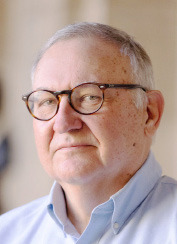We live in a world where having adequate high-speed internet service is not just a luxury, but a necessity.
With proper broadband, you can use a computer to run a business, manage a good website, work remotely and operate the new generation of precision agriculture equipment.
But here’s the problem – it’s expensive to hook up every home, farm and ranch to the best service, which is generally agreed to be fiber optic cables.
When it came to electricity, the nation opted for a federal loan program, the Rural Electrification Act of 1936, that financed the stringing of transmission wires to even the most remote areas of the country.
In the case of broadband internet, it’s been more of a shotgun approach. Companies have installed fiber or erected wireless towers in areas with the most population (and most customers) but in more rural areas, service is spotty. So state and federal programs help companies with the additional expense of stringing of fiber and erection of towers.
Still, after millions of state and federal dollars have been spent, there are still areas of Nebraska that don’t have decent broadband, maybe as many as 30,000 locations.
At our family farm, for instance, you need to install a microwave disk, aim it at a nearby farm on a high hill, and hope the signal from a town 10 miles away can make the trip to that farm, and then to ours.
That’s not an ideal situation. But then along came the Broadband Equity, Access and Deployment Act (BEAD). Passed under the Biden Administration, it earmarked more than $42 billion dollars in the name of providing good broadband “for all” and ending the “digital divide” between urban and rural areas.
Nebraska was scheduled to get $405 million for projects across our state, with the program prioritizing the funds for top-of-the-line fiber optic internet.
But like a lot of federal programs, things changed big time after President Donald Trump took office.
Suddenly, the priority shifted from laying fiber optic lines, which is more expensive, to giving grants to less costly service via satellites and wireless towers. It’s hard not to be cynical about the changes, because two of the biggest satellite internet firms are owned by Trump buddies Elon Musk and Jeff Bezos (and at the time, Bezos’ company hadn’t yet begun providing service). The changes also disqualified about half of the 30,000 locations once identified as “unserved or underserved.” So a whole bunch of areas could no longer qualify for BEAD funds.
When the State Broadband Office, created by Gov. Jim Pillen, recently came out with its recommendation on how to spend the state’s $405 million, very little of it was devoted to fiber, and a whole bunch of it was devoted to other technologies. Only 9% of the eligible locations in Nebraska were recommended for fiber – the lowest percentage among 39 states and much less than neighboring Iowa (50%) and Kansas (46%). And only $43.8 million of the $405 million was recommended to be spent, spurring speculation that the goal was to send dollars back to Washington to help finance the tax cuts in the Big, Beautiful Bill.
The reaction from advocates for rural areas, and adequate broadband, were pretty harsh.
“If there was a trophy for squandering opportunity, Nebraska would already have it on the shelf,” said Emily Haxby, a Gage County Board member who spent her own free time to make more locations in Nebraska eligible for BEAD funds.
To be fair, it’s much cheaper to send internet signals via satellites and wireless towers than by stringing fiber optic lines (an average of $1,000 to $2,200 for satellite and wireless per location versus up to $14,600 for fiber).
But this was about economic opportunity. And you get what you pay for.Fiber doesn’t get impacted by bad weather or other users, or is blocked by trees and hills, and it can be upgraded as technology improves to allow higher upload and download speeds.
The head of the Nebraska Broadband Office defended the paltry awards, saying the state had to comply with the new federal rules. He also added that the state hopes the feds allow Nebraska to keep the $350 million in unspent funds to use for broadband related projects, like training.
I dunno. It sure looks like Nebraska took the new federal rules much more seriously than other states, and could have pushed much harder to use more of its funds to improve internet service.
— Paul Hammel has covered the Nebraska state government and the state for decades. Prior to his retirement, he was senior contributor with the Nebraska Examiner. He was previously with the Omaha World-Herald, Lincoln Journal Star and Omaha Sun.

.jpg)








